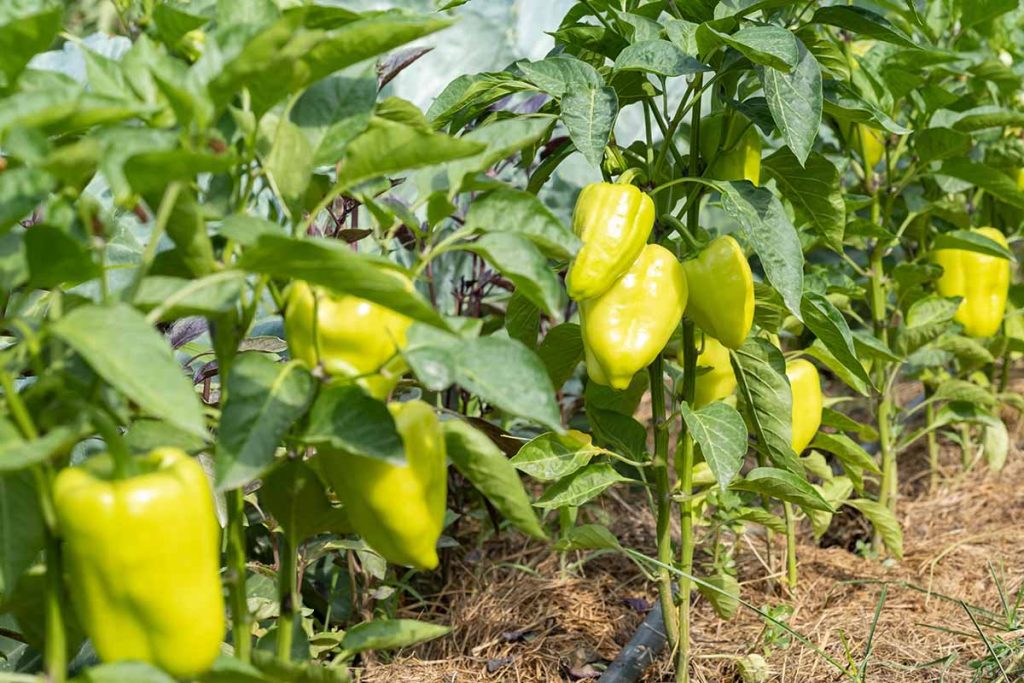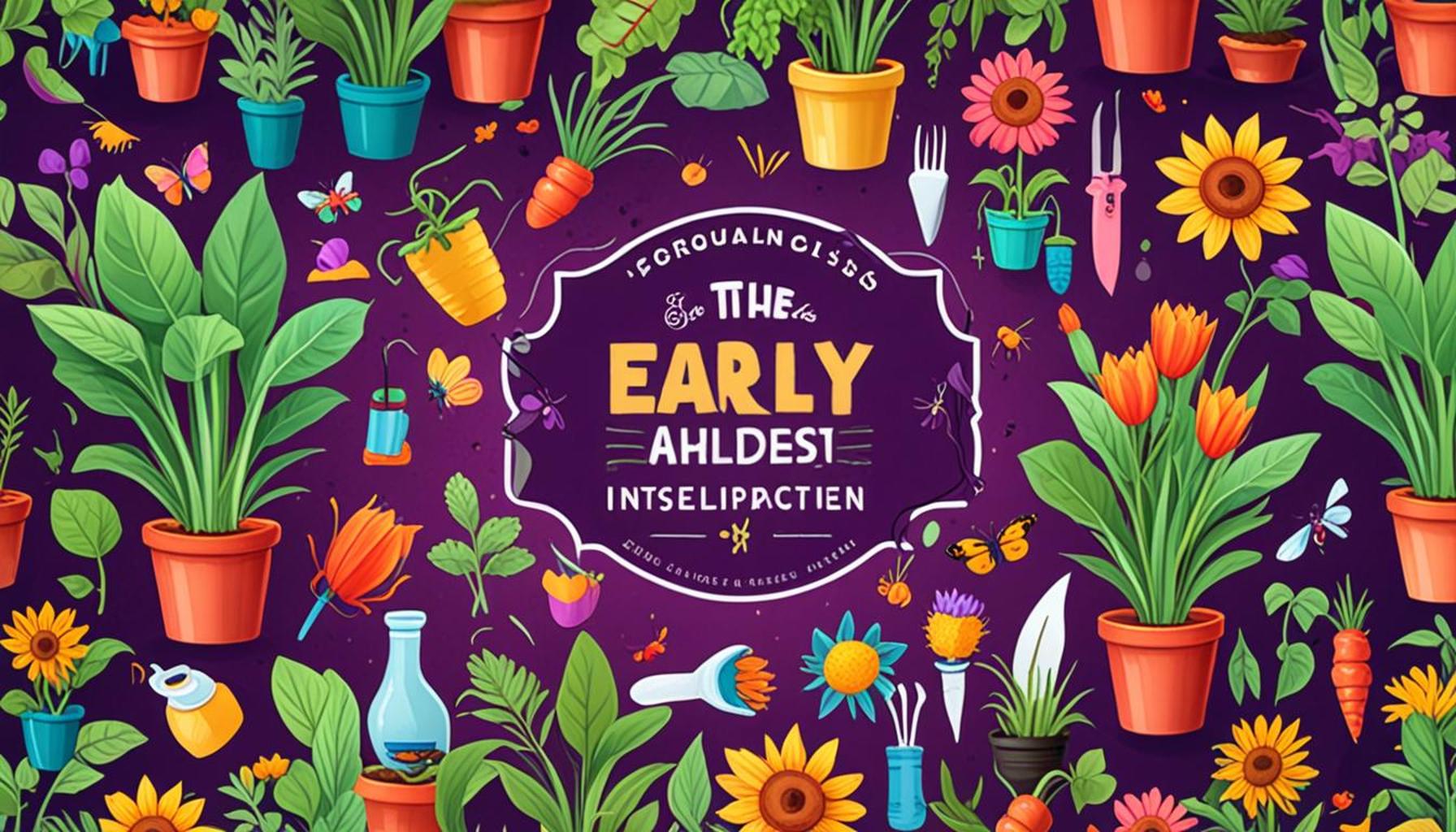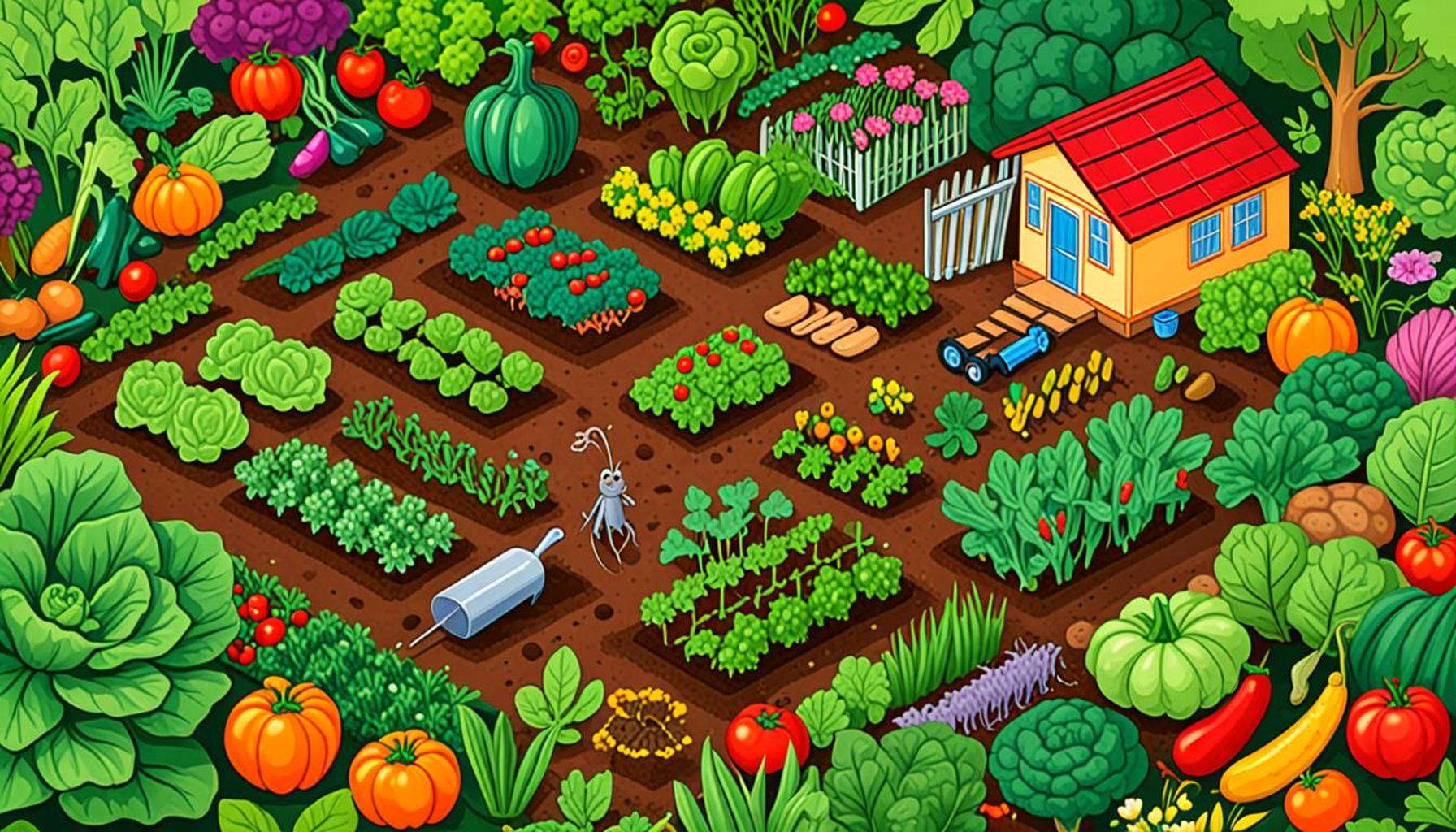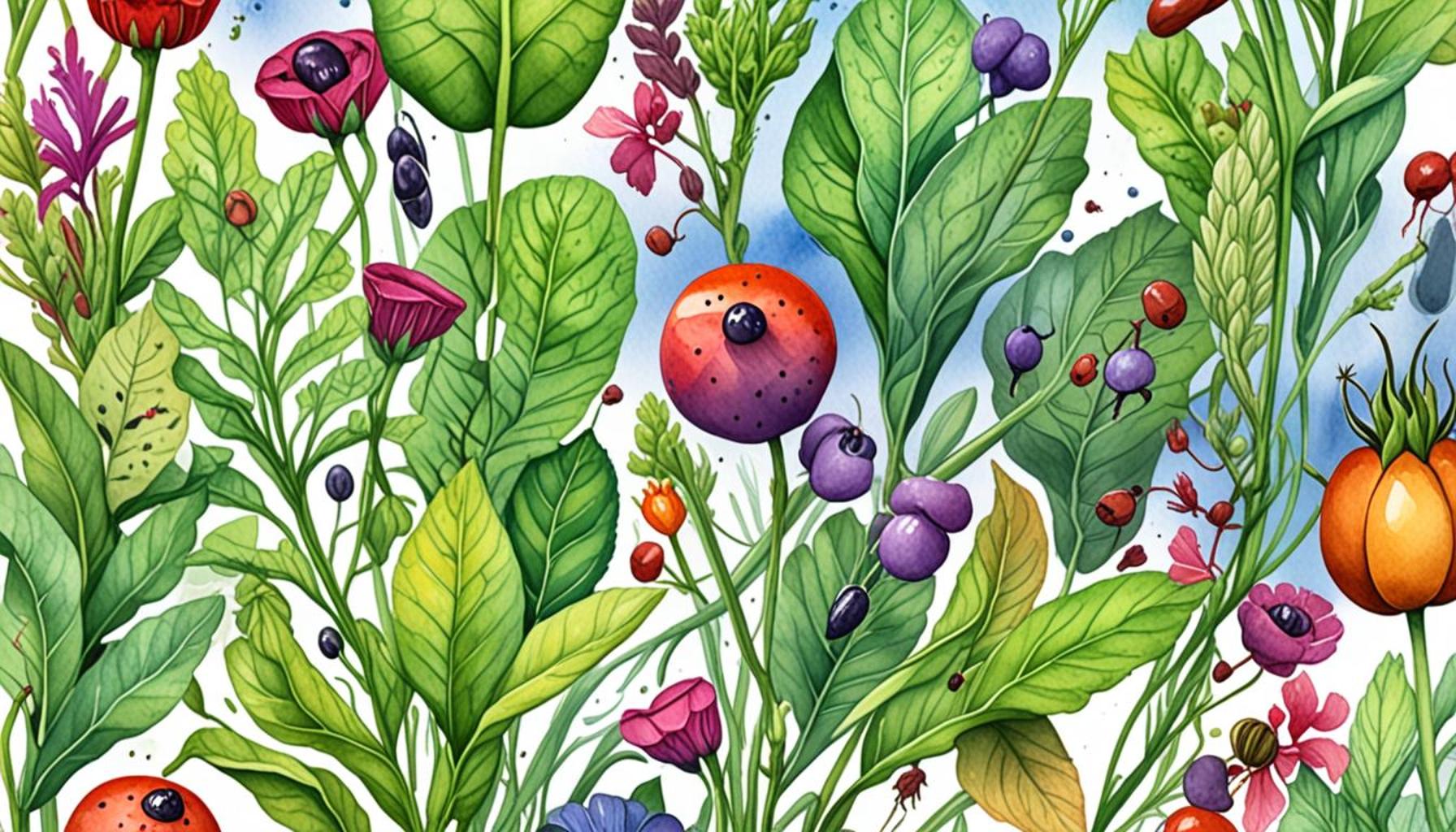How to Identify Signs of Infestation in Garden Plants

The Critical Importance of Pest Detection in Your Garden
Garden plants are the pride of many homeowners, but they can quickly become victims of pests. Understanding how to identify signs of infestation is crucial for preserving the health and beauty of your plants. Early detection can save you from significant damage and costly treatments. For instance, a thriving tomato plant can swiftly decline if infested with aphids, while a rose bush may struggle if attacked by spider mites.
Understanding the Signs of Pest Infestation
Detecting pest issues early can be the difference between a flourishing garden and a devastated one. Here are some common signs of pest infestation that every gardener should know:
- Wilting leaves – When leaves lose turgor pressure, they droop or wilt, indicating stress often caused by pests feeding on their juices. For example, if your zucchini plants start drooping despite adequate watering, it may be a sign of a hidden pest issue.
- Discolored foliage – Yellowing, browning, or black spots on leaves can signal the presence of harmful insects. A common culprit is the whiteflies, which can leave behind a sticky residue and cause leaf discoloration, often leading to further issues like powdery mildew.
- Small holes – Uneven chewing on leaves typically points to munching bugs like caterpillars or beetles. The presence of small holes on kale or cabbage, for example, can indicate a caterpillar infestation. Recognizing these signs early can lead to decisive action before the damage spreads.
- Sticky residue – A sugary film on leaves could suggest aphids or mealybugs, both notorious for excreting honeydew, which can attract other pests like ants. Spotting sticky surfaces can indicate a larger problem lurking in your garden.
Proactive Monitoring and Maintenance
Monitoring for these signs can help you act swiftly. Regular inspections of your garden will strengthen your chances against infestations. Utilize practices such as observing your plants in the early morning or late evening when pests are most active. Additionally, keeping a garden journal can help track changes in your plants over time.
Not only do healthy plants thrive better, but they also contribute to a vibrant ecosystem in your yard. Native plants can attract beneficial insects, like ladybugs and lacewings, which are natural predators to many common garden pests. Incorporating companion planting can also deter specific insects while promoting plant health.

In this article, we will delve deeper into the signs of pest infestations, explore some common pests found in American gardens, and provide actionable tips on maintaining plant health. By equipping yourself with knowledge, you can empower your garden to flourish while effectively evading unwanted pests. Stay tuned to discover how to keep your garden green and thriving against the odds.
DISCOVER MORE: Click here to dive deeper
Recognizing Physical Signs of Infestation
When it comes to identifying the early warning signs of pest infestations in your garden plants, observation is key. Each type of pest manifests its presence in specific ways, and being familiar with these tells can mean the difference between quick remediation and extensive damage to your beloved plants. Let’s explore some of the most common signs that your garden may be experiencing an unwanted invasion.
Visual Indicators of Pest Presence
One of the most effective ways to identify signs of infestation is by looking for visual clues. Here are some major indicators to watch for:
- Webbing – Fine, silk-like threads may appear across various areas of your plants, particularly if spider mites are present. These tiny pests can create an extensive webbing network on leaves and stems. When you notice this, inspect further to confirm the infestation and consider immediate action.
- Leaf Drop – If you begin to see a significant number of leaves dropping from your plants, it may suggest stress induced by pests. For instance, if your indoor plants are shedding leaves rapidly, it could indicate a scale insect or aphid problem that demands immediate attention.
- Presence of Insects – The obvious and most alarming sign of pest infestation is the visible presence of insects themselves. Look for small groups of insects on leaves and stems. Common garden pests include aphids, caterpillars, and thrips, which require prompt identification and control measures.
- Fungal Growth – The appearance of mold or fungus on your plants can be a side effect of pest infestations. Mealybugs and aphids often excrete honeydew, creating a fertile ground for sooty mold to thrive, which can further hinder your plants’ health.
It’s important to be vigilant and proactive in your monitoring—regular walk-throughs of your garden can help you quickly spot these phenomena before they escalate. A dedicated gardener will often find it beneficial to dedicate just a few minutes each week to a detailed examination of their plants, looking closely at both the upper and lower sides of leaves.
Utilizing Tools for Effective Inspection
Equipping yourself with the right tools can enhance your ability to monitor for pests effectively. Consider using a magnifying glass to spot tiny insects or eggs that might otherwise go unnoticed. Sticky traps can also be strategically placed around your garden to catch flying pests and provide visual evidence of potential outbreaks. Educational resources, like gardening books and pest identification guides specific to your region in the United States, can further help in recognizing the nuances of pest activity.
By remaining vigilant and informed, you can enhance your ability to detect signs of infestation early on, allowing for timely actions that promote the vitality of your plants and the overall health of your garden. Remember that a well-tended garden is often the first line of defense against pest problems!
Recognizing the Symptoms of Infestation
Identifying signs of infestation in garden plants requires a keen eye and knowledge of common pests and diseases. Early detection can save your plants and enhance your gardening success. Here are the main indicators to look for:
| Signs of Infestation | Description |
|---|---|
| Visible Pests | Check for small insects on leaves or stems, such as aphids, spider mites, and whiteflies. |
| Discoloration of Leaves | Yellowing may indicate stress from pests or disease, while browning can signal more serious issues. |
| Webbing or Sticky Residue | Presence of spider webs or sticky honeydew suggests aphid infestations or spider mites. |
| Holes in Leaves | Non-uniform holes can indicate chewing pests like caterpillars or beetles. |
By paying attention to these warning signs, you can take swift action against garden plant infestations. Regular monitoring and early intervention will help protect your plants and promote a thriving garden environment. Engaging in a proactive approach will not only safeguard your plants but also enhance your overall gardening experience. Stay informed about the specific needs and vulnerabilities of your plants for continued health and vitality.
DISCOVER MORE: Click here to learn about effective drip irrigation techniques
Monitoring Environmental Factors
Aside from visual signs, understanding the environmental factors surrounding your garden plays a crucial role in identifying signs of infestation in garden plants. Pests thrive under specific conditions, and being cognizant of these elements can enhance your early detection strategies. Let’s delve into some key situational aspects to monitor closely.
Soil Health and Conditions
The health of your garden’s soil is fundamental when it comes to preventing pest infestations. One of the first things to consider is soil moisture. Overly wet conditions can lead to weak plants that are more susceptible to pests. Pests like root aphids tend to thrive in waterlogged soils. Monitoring moisture levels and ensuring proper drainage can have a significant impact on pest avoidance.
Moreover, assessing your soil’s nutrient content is vital. Plants that are deprived of essential nutrients are more vulnerable to infestations. A soil test will provide insights into its pH balance and nutrient availability, which can help you adjust your gardening strategies accordingly. Regular amendments with organic material such as compost can bolster the health of your plants, making them less appealing to pests.
Seasonal Changes and Pest Activity
Being aware of the seasonal cycles in your region can also aid in the early detection of infestations. Many pests have specific life cycles that correspond to warm weather, so understanding these patterns can guide your vigilance. For example, in the Southeastern United States, aphid populations tend to explode in the spring, which is when they become a pressing concern for gardeners.
Integrating regular garden checks with seasonal pest calendars can prove to be a handy strategy. This routine can involve searching for specific pests during key seasons when they are most active, allowing you to take preventative measures before infestations can take hold.
Neighboring Flora and Fauna
Another element that contributes to identifying signs of infestation is understanding the relationship between your garden plants and the surrounding flora and fauna. Pests can easily migrate from nearby plants that you may not be monitoring. Keep an eye on neighboring gardens, especially if they have known pest problems. If you notice that your plants are sharing space with infested neighbors, be proactive in examining your own plants to avert potential outbreaks.
Additionally, the presence of certain animals can be a clue. For example, if you see an influx of birds or beneficial insects like ladybugs, they may be a natural predator to crop-destroying pests. Their presence often indicates a balance in the ecosystem that is favorable to plant health. Conversely, if you notice a sharp decline in such beneficial species, it could suggest an underlying issue that may eventually escalate into a pest problem.
Staying informed about your garden’s surroundings can facilitate a more comprehensive approach to pest management. By observing changes in environmental factors, soil health, and neighboring gardens, you arm yourself with vital knowledge to combat infestations effectively. These insights not only help you identify the signs of infestation but also promote a more resilient and thriving garden ecosystem.
DIVE DEEPER: Click here to learn why soil testing is essential
Conclusion: Cultivating a Pest-Resilient Garden
Successfully identifying signs of infestation in garden plants is essential for maintaining a lush and productive garden. By combining visual inspections with an understanding of environmental factors, such as soil health and seasonal pest activity, you empower yourself to take proactive measures. Regularly monitoring the conditions that affect both your plants and their surroundings can greatly decrease the likelihood of pest outbreaks.
Remember that healthy soil leads to stronger plants that are far less appealing to pests. Employing organic amendments like compost not only nourishes your plants but also fosters an ecosystem that is resistant to infestations. Additionally, staying alert to seasonal trends and the health of neighboring flora provides crucial insights into potential threats. If pests are active in nearby gardens, it’s imperative to closely examine your own plants to manage risks early.
Furthermore, the relationship between local wildlife and your plants can be revealing. The presence of beneficial insects can indicate a balanced ecosystem, while the absence of these allies may suggest an imbalance that can lead to pest problems. By cultivating vigilance and understanding the interconnectedness of your garden’s ecosystem, you can successfully identify and combat signs of infestation.
In conclusion, staying informed and embracing a holistic approach to pest management will not only help in recognizing pests early but will also enrich your gardening experience, resulting in a flourishing, healthy garden. Through awareness and preparedness, we can foster resilience in our gardens and enjoy the beauty and bounty they provide.


